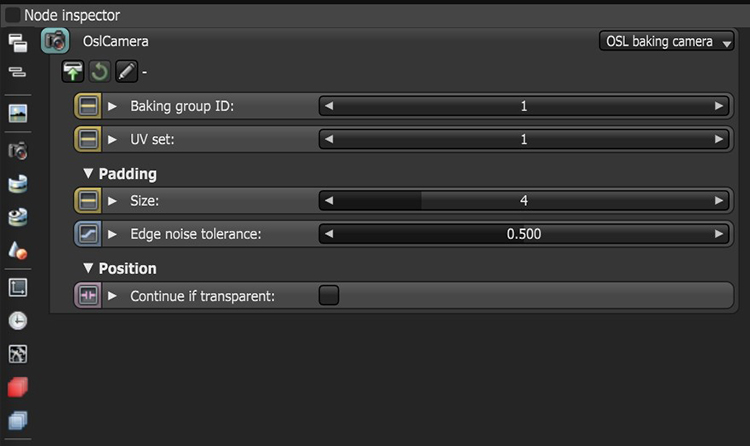
The OSL Baking Camera is a scriptable camera. You can create custom camera types for any purpose (such as VRImmersively engaging and experiencing depth perception in a three dimensional scene through stereo vision goggles and head-mounted displays. warping) with OSL (Open Shader LanguageA shading language developed by Sony Pictures Imageworks. There are multiple render engines that utilize OSL as it is particularly suited for physically-based renderers.) scripts. It is a very flexible camera used to match the rendering to the existing footage. To learn about the generic OSL standard, read the OSL Readme and PDF documentation.
The OSL cameras work in conjunction with other OSL features like the OSL texture node. While the OSL camera's parameters are identical to the Standard camera, the OSL Baking camera contains a unique set of camera parameters used for controlling the baking process. These parameters are covered in more detail in the Texture BakingA process in which scene lighting is "baked" into a texture map based on an object's UV texture coordinates. The resulting texture can then be mapped back onto the surface to create realistic lighting in a real-time rendering environment. This technique is frequently used in game engines and virtual reality for creating realistic environments with minimal rendering overhead. topic under the Rendering section of this manual. To learn more about scripting within OctaneRender® using OSL, see the The Octane OSL Guide.

Figure 1: The OSL Baking camera parameters.
OSL Baking Camera Parameters
Baking Group ID - Specifies the group ID to bake. By default, all objects belong to the default baking group number 1.
UV Set - This determines the UV coordinates to use for baking.
Revert Baking - Flips the camera directions.
Padding
Size - The number of pixels added to the UV map edges. The padding size is specified in pixels. The default padding size is set to 4 pixels, with 0 being the minimum and 16 being the maximum size.
Edge Noise Tolerance - Helps remove hot pixels appearing near the UV edges. Values close to 1 do not remove any hot pixels, while values near 0 attempts to remove them all.
Position
Continue if Transparent - If disabled, a transparent surface will terminate the path. If enabled, the ray will continue through the transparent surface.